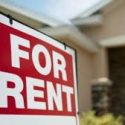The Two Types Of Foreclosure
There are two types of foreclosure that are allowed depending on the law state. After the property has been taken into ownership,if the owner fails to pay the loan or mortgage, the house goes into foreclosure. Below is an explained term of the types of foreclosure.
#1. Judicial Foreclosure
In some cases, when a property is bought by a borrower, and he/she does not have the exact amount of cash to pay upfront, they can obtain a loan from either the bank or a creditor. The bank will have charge over the property until the borrower can be able to pay the cash according to the terms agreed between the bank and the lender. If the deadline of the payment is long overdue, the bank can take it into their own hands to seize the property as their own. A warning will be made clear to the lender to alert them on the due date of the payment, if they do not comply and pay up, the bank can then take action over the property. An approval will be taken from the court to give the go-ahead of the foreclosure process, with an account of a lis pendens done by the county clerk at the location of the residence. The lender/bank will be granted the decision to go ahead with the foreclosure process, and auction off the property to retrieve the cash borrowed off to the lender. The notice will indicate the time, date and location of the auction and publicly posted before the set date. If the borrower can be able to provide the money before the day of sale, the foreclosure will process will be terminated. However, if he/she does not respond to the situation, they are left with no other choice than to forfeit the property, making the bank/lender to take ownership of it.
#2. Non-Judicial Foreclosure
A property that still has the title of a lender till the mortgages have been fully paid off will not require any auction to be conducted by the court. It is borrowed off through a deed of trust or a third party trustee to stand as a witness over the loan of the property till the debt is fully paid off. A record of a Notice of Default (NOD) is taken by the trustee at the location of the property with the help of a country clerk. If the borrower refuses to pay the mortgage, the trustee has the right to go ahead with the foreclosure process by virtue of a power of sale involved in the deed of trust. A period of grace is granted to the borrower to pay up the outstanding payment or face the consequences. After the grace period has exceeded, the foreclosure will continue to take place, with a posted notice of the details of the auction. The property can be auctioned off without the need of the court. The foreclosure process is swift and easy,as it neither has to be redeemed by the owner.





